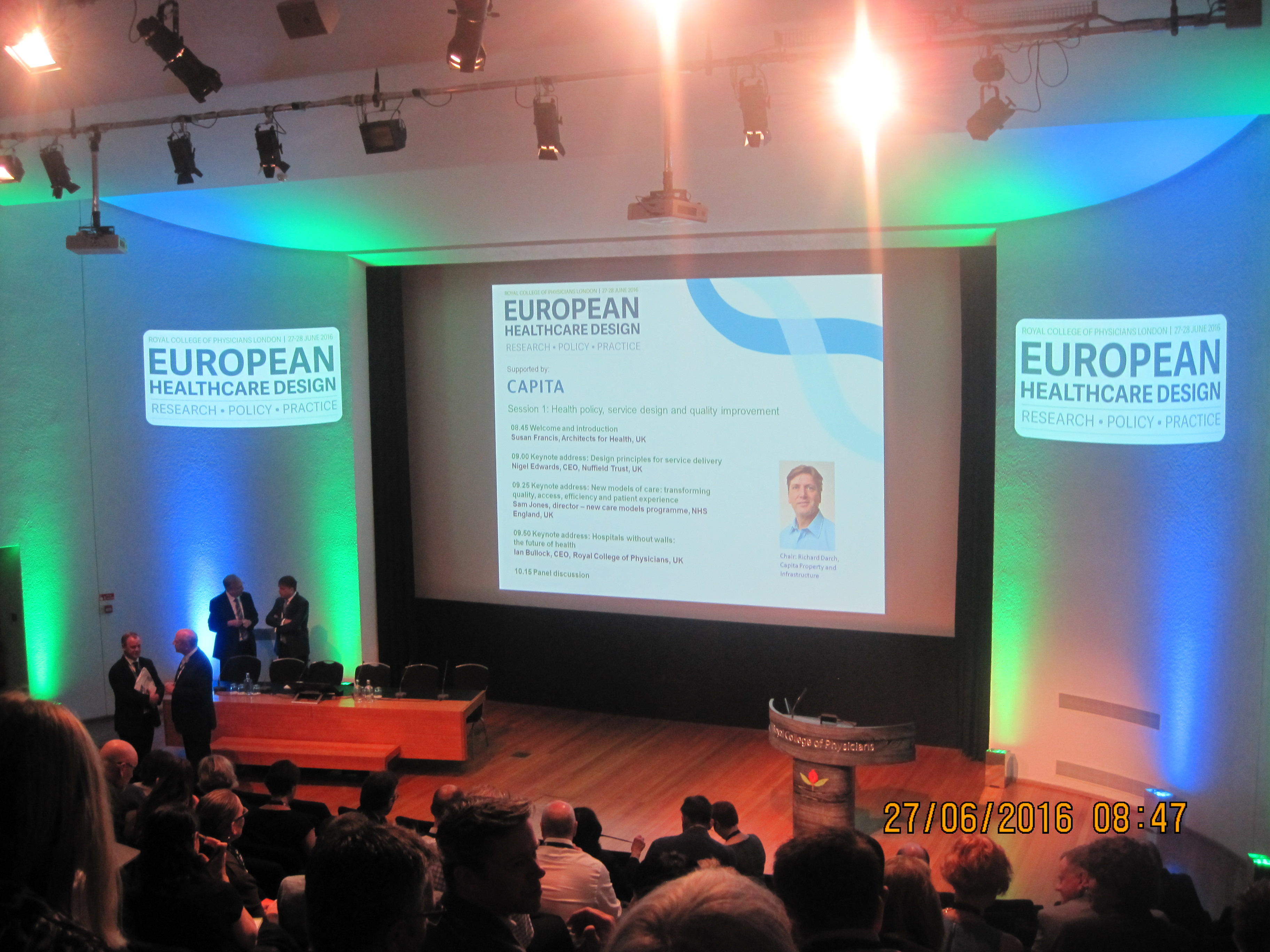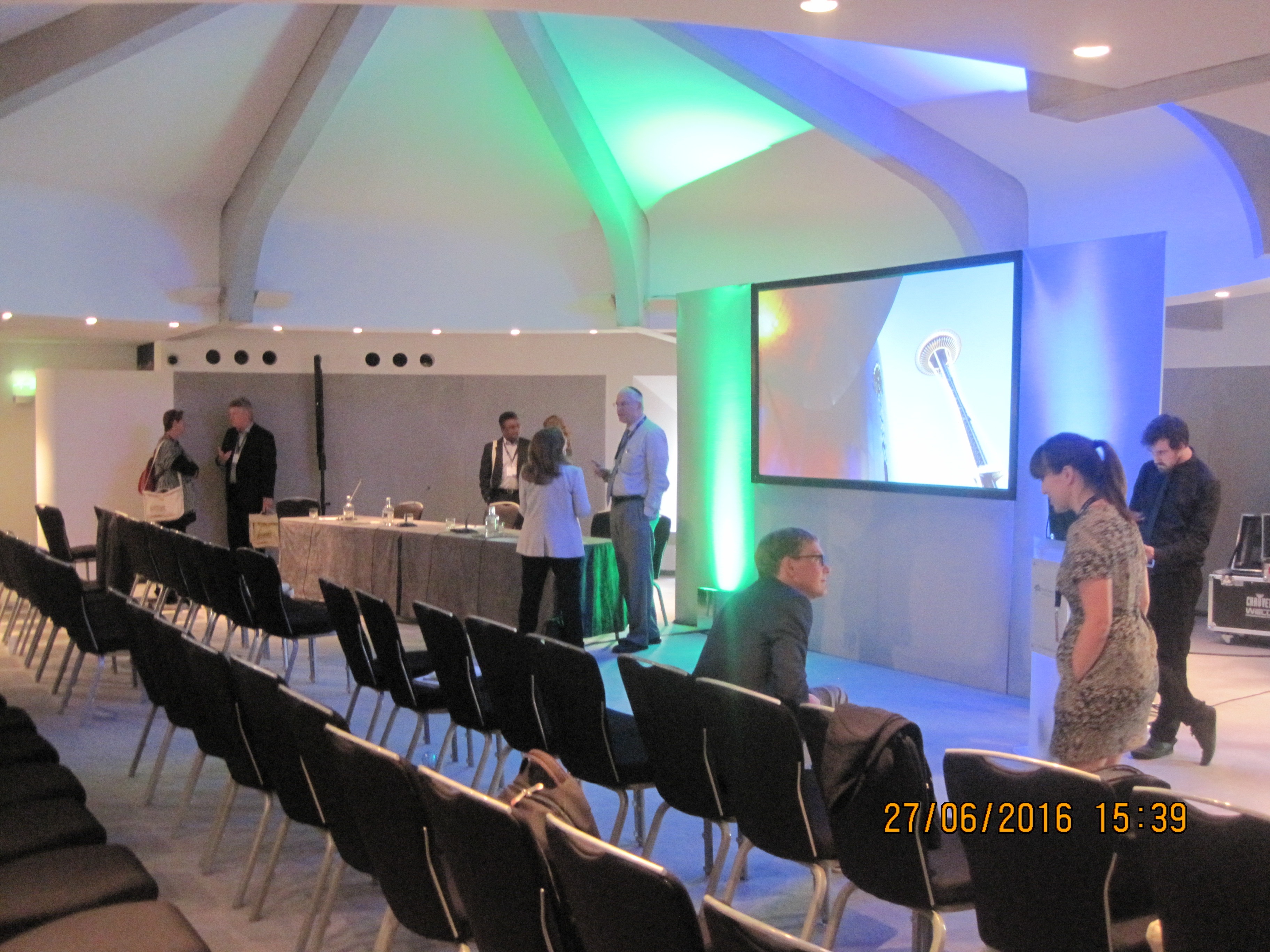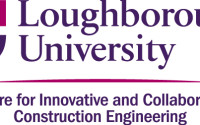European Healthcare Design Conference 2016
Monday 27th and Tuesday 28th June 2016 saw the second European Healthcare Design (EHD) conference held at the Royal College of Physicians in London. The conference was aimed at those designing healthcare facilities to disseminate and share new knowledge and case studies in the field of healthcare design. I attended the conference both as a learning opportunity, and because I was selected to present a paper on technologies to aid evidence based design (a link to the full paper will be available in due course).
Day one – Monday 27th
The conference began at 8:50am on the first day with opening addresses from keynote speakers Nigel Edwards, Samantha Jones and Ian Bullock. The opening keynote speech from Nigel focused on resigning the systems within healthcare in order to change the outcomes. He touched upon some design principles, how we should standardise where we can, centralise where necessary (and decentralise where necessary) and introduce safety as a standard, rather than as an outcome. Our current processes for healthcare seem to centre around storing patients until the next department is ready for them, giving the illusion of movement and flow while really just moving people around. As a service, healthcare has got better at fitting the care to the needs of the patients but more could still be done, with the possibility that 10-25% of admissions could be cared for at a lower level of care than hospital care. There is also the issue with how we record our data for our performance metrics, with Nigel highlighting that recording hospital occupancy at midnight (typically a quiet time particularly for day-surgery departments!) does not provide us with accurate data for how occupancy changes over time. Similarly, small consultation times can prohibit patients from revealing their most concerning condition (which they may not know themselves), which can cause problems in healthcare later on.
Samantha Jones discussed the NHS Vanguard programme, an insightful introduction to a handful of hospitals that are looking to take the NHS forward. Most of this comes from increasing communication to connect the care in disparate services provided. Updates on Twitter can reportedly be found using the hashtag ‘#FutureNHS’. Ian Bullock’s speech looked at hospitals without walls, and how hospitals can do better if they integrate similar services close to each other within a hospital (the example given was integrating geriatric care in emergency departments). Following a brief coffee break two more keynote speakers gave talks on understanding the patient demand, with advice given to avoid focusing on the activities and focus more on the people (avoiding ‘activity obsession disorder’), along with a 2030 plan for healthcare in Alberta’s (Canada) health services.
The afternoon sessions included the presentation by myself and Becky (my industrial supervisor) and so I did not attend other sessions which clashed (naturally). The presentation prior to ours was delivered by Johan, a researcher from Norway who presented SMART hospital design using BIM (Building Information Modelling), E-BIM (Enterprise BIM) and Open-BIM (where the hospital is the owner of the BIM created model and anyone who wishes to use it must go through the hospital, as opposed to the architects owning and controlling the BIM created model). Johan discussed ways you could connect departments and view them in various models to highlight the departments in one patient’s journey (connected dots), or the adjacencies between departments (i.e. which functions are used commonly together) or chronological (which activities occur in which order most commonly). With the right data, this could become a simulation model for prediction and there is current work being done in Norway to trace smartphones through a hospital.
The talk by Becky and I looked at some tools to aid data gathering to use in hospital design, with an emphasis on why we believe evidence based design is the way to go. I introduced two new tools to aid this goal in the form of SmartCounter3D and SmartCounter for video analytics (more information is available in the paper). Overall I feel the presentation went well and we had a couple of interesting questions (focussed mostly on the industrial applications) that Becky fielded.
Day two – Tuesday 28th
Day two began at 8:50am again with another morning of keynote speeches. The first was from the founder and president of Healthcare without Harm who delivered an inspiring and interesting presentation in how most countries do not promote health. Our healthcare systems are focused on making us better after we become ill, but not on preventing us from becoming ill in the first place. The example given was the use of mercury thermometers which were used despite the ill-health effects of them. It is only recently that there is a world-wide phase out of mercury based equipment in hospitals.
I spent the afternoon sessions listening to presentations on specific design studies in healthcare. The first looked at how environmental factors in the design of clinic rooms and bathrooms impacting on a patients likelihood to have a fall. The research, which was based on an experiment, found that certain movements such as turning, pulling and pushing led to a higher risk of a fall. The second looked at how the design impacts upon nursing staff satisfaction in a qualitative study of 12 focus groups composed of nurses in both Australia and the UK. The study found many factors which impact staff wellbeing and satisfaction at work which are environmentally based (in the design) rather than based in other aspects of job satisfaction. A key-note is that a lot of designers design hospitals for patients to aid the healing process without always remembering that hospitals are also a place of work for large numbers of people. The third talk of the sessions was based on the design of NICU units and how nurses spend their time between care and auxiliary tasks in a NICU department.
For the final session of the day prior to the awards and closing remarks I sat in on presentations around neuro-architecture and a case study of a psychiatric hospital project in Al Wakra. The first presentation gave the message that designers should speak to the clinicians using the space to get the best design possible that works well. Some aides are being developed in the use of virtual reality cages and headsets that allow designers (and clinicians) to visualise models prior to their construction. This allows for changes to be made easily and early on in the design stage to aid the efficient and effective use of the facility upon completion. The final keynote speech touched on new measures and designs in mental health care, with a view from the NHS to give the same care for mental health issues as to physical health issues. One of these is a new target similar to the emergency department target that patients should not be waiting more than 4 hours to be admitted, treated or discharged to an acute psychiatric ward once it becomes apparent they may benefit from such actions. This is due to come into effect in the next NHS constitution in October 2017.
Overall, I think the conference went very well, with plenty of new topics emerging and some thought-provoking ideas being discussed. The layout of the conference was good with similar discussions being grouped appropriately and easy transition between rooms if people wanted. A good couple of days in London exploring the future of healthcare design.



